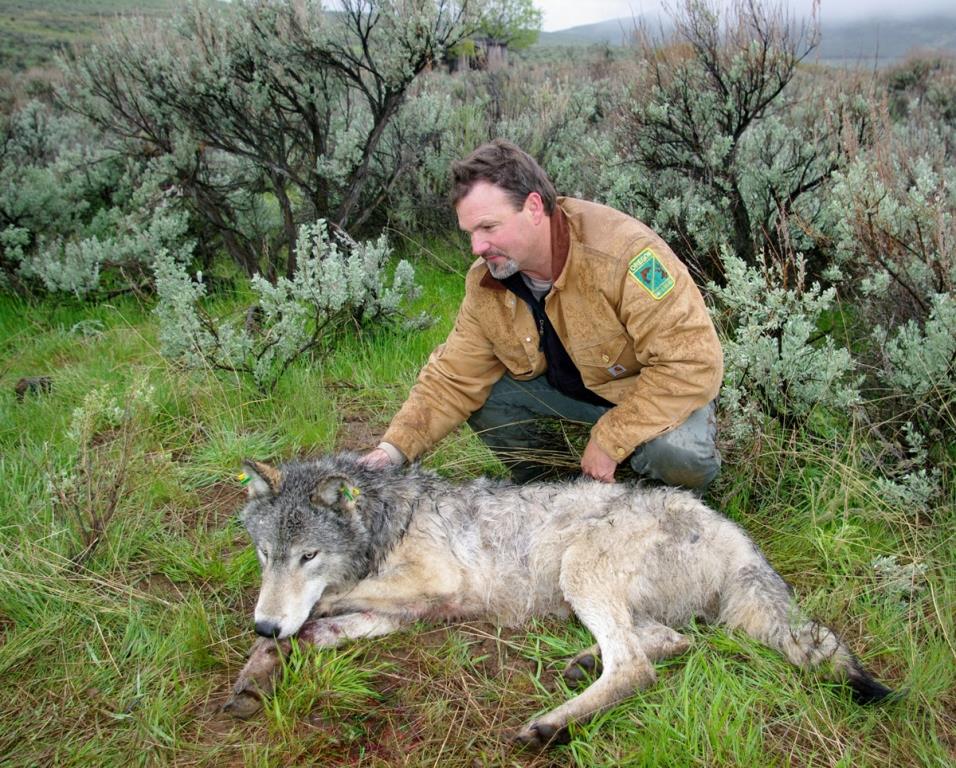
Decades ago, wolves across the West were shot out of existence. Protected by their status as an endangered species, they've begun to make a comeback. Sadly, this fall they will again be running from bullets.
Already this year, poachers were caught red-handed in Washington after killing one of the first wolves to return to that state.
In Idaho, scientists and conservationists are fighting anti-wolf interests in court to stop a state-sponsored slaughter after the species was removed from federal protection.
Meanwhile in Oregon, most folks are concerned over how we can welcome back and live with this native predator. Those concerns grew last week when the Oregon Department of Fish and Wildlife issued a kill order for the first two wolves born in Oregon in over 60 years,
With less than 10 wolves in our state, the loss of even a single wolf is a blow to their recovery.
When these two wolves killed some sheep earlier this year, the Oregon Cattleman's Association and the Oregon Farm Bureau marched to Salem. They howled that they lacked "the freedom" to protect themselves from the "marauders intent on maiming or killing." However, ODFW's decision to issue a kill order makes it brutally clear that our state's management plan gives the agency more than enough tools to protect ranching interests. The last thing we need to do is make it easier for people to shoot this still very endangered species.
In Salem, anti-wolf interests lobbied to cut biologists and wildlife managers out of the decision-making process. They argued for "the freedom" to allow folks with guns to shoot any wolf they deemed a threat. In the Keating Valley however, the affected rancher took steps to protect his sheep that didn't involve bullets. He eliminated the 2-acre carcass pit that originally enticed the wolves to an all-you-can eat sheep buffet. He worked with ODFW and conservation groups to keep the wolves away. Sadly, these wolves learned about fast food at an impressionable age, and bad habits are hard to break.
This serves as a cautionary tale for what's happening in Idaho. As part of a scheme to reduce wolf numbers by half, the wolf hunt targets one-quarter of that state's population. This is in addition to the 100 or so the state kills annually to appease ranchers, and those that are killed by poachers.
This year's pups are fair game, and those that survive without their parents will be out on their own much too early -- before they learn to stay away from easy meals and how to hunt wild prey. A premature hunt in Idaho will only create more problems.
Though Idaho claims to be undertaking the hunt to "manage" the wolf population, the state's history suggests otherwise. In 2001 Idaho passed a law calling for the eradication of wolves "by any means necessary," and have already sold over 10,000 hunting tags for wolves. Idaho's Fish and Game commissioner stated last month that there's going to be "either a state-authorized [hunt] or an illegal one." Either he can't do his job, or he's choosing not to.
What happens in Idaho matters in Oregon. Our state is dependant upon healthy wolf populations in Idaho to disperse into Oregon. The return of wolves has been good for the landscape of the West. According to the Rocky Mountain Elk Foundation, elk numbers have increased in every state where wolves have "recovered," vegetation has bounced back, and towns near Yellowstone and in Idaho are raking in the profits of wolf tourism.
The decision to kill an endangered species should not be taken lightly (imagine a hunt to reduce bald eagle numbers by half). Fortunately here in Oregon, it hasn't. But it doesn't make the news any less disheartening, and it certainly doesn't mean we should make it any easier.
 '
'
